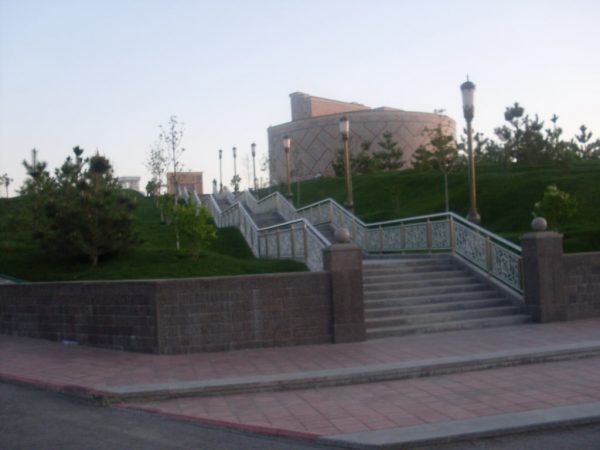Timurid ruler as well as an Astronomer, Mathematician and Sultan
Ulugh Beg and there are many variations on the name (Turkish for “great prince”) was a Timurid astronomer who made some of the best astronomical observations of his time. He is mostly remembered as a patron of mathematics and astronomy.
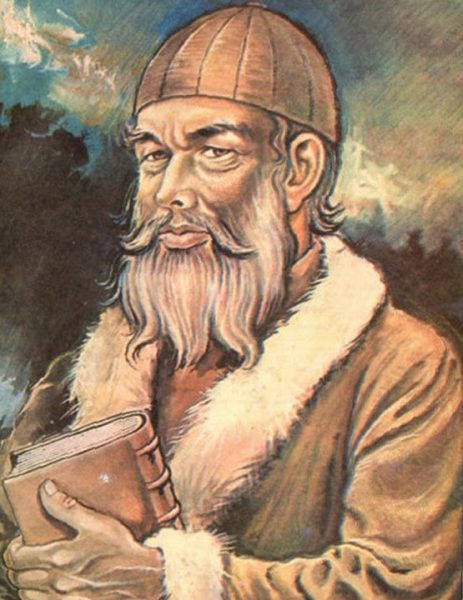 |
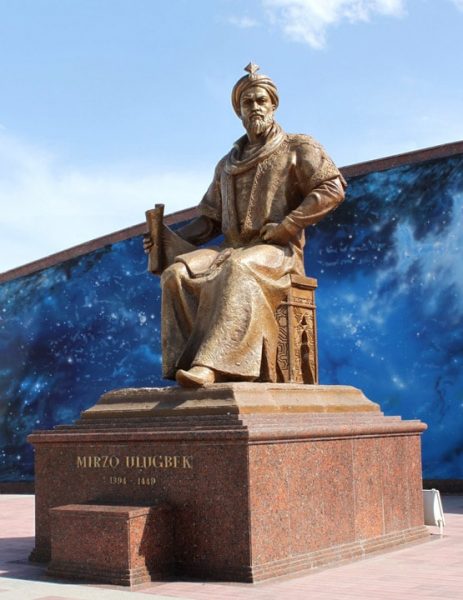 |
In 1417 he established a madrasa, which is a religious school or college, in Samarkand. Here, unlike other madrasas, mathematics and astronomy were among the most important subjects taught. The building still exists on the Registan Square.
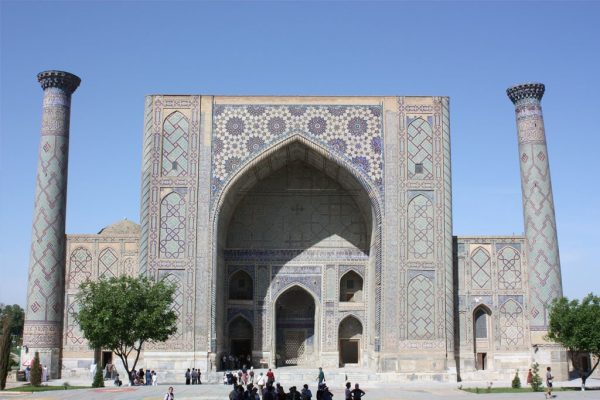 |
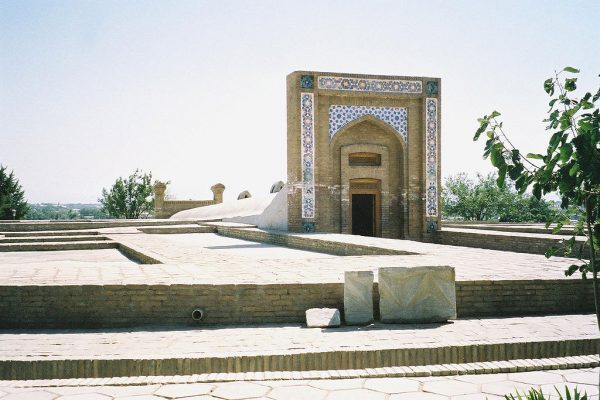 |
In 1420 he established his own observatory on a rocky hill outside the city of Samarkand. Its circular main building was beautifully decorated with glazed tiles and marble plates had a diameter of about 46m and three stories reaching a height of approximately 30m above ground level and was one of the largest in the pre-modern era.
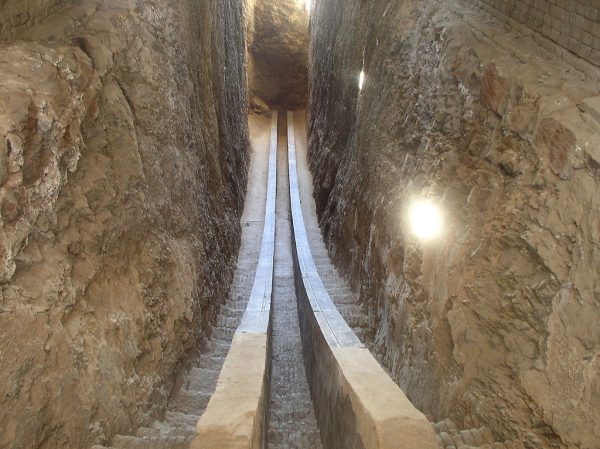
The main instrument in Ulugh Beg’s observatory was a huge sextant called the Fakhrī sextant. The radius was 40.04 meters, which made it the largest astronomical instrument in the world of that type.
It was embedded in a trench about two metres wide, and dug into a hill in the plane of the meridian. This method of construction made the instrument completely stable and reduced the errors arising from the minor displacements common in movable observational tools. The main use of the Fakhrī sextant was in determining the basic constants of astronomy: the inclination of the ecliptic to the equator, the point of the vernal equinox, the length of the tropical year, and other constants arising from observation of the sun. Thus it was built chiefly for solar observations in general and for observations of the moon and the planets in particular.
The enormous size of the sextant made its graduation very accurate. On the arc of the sextant, divisions of 70.2 cm represented one degree, while marks separated by 11.7 mm corresponded to one minute and marks only 1mm apart represented five seconds. Items known to have been used in Samarkand include astrolabes, quadrants, and sine and versed sine instruments and an armillary sphere, a parallactic ruler, and a triquetrum. Many well-known Islamic astronomers are known to have worked here. Some of the most extensive observations of planets and fixed stars at any Islamic observatory were made here. Results of the study of the yearly movements of the five bright planets known in the time of Ulugh Beg:
| Ulugh Beg Value | True Value |
|---|---|
| Saturn 12°13’39” | 12°13’36” (d’ Alembert) |
| Jupiter 30° 20′ 34″ | 30°20’31” (d’ Alembert) |
| Mars 191°17’15” | 191°17’10” (Lalande) |
| Venus 224°17’32” | 224°17’30” (Lalande) |
| Mercury 53°43’13” | 53°43’3″ (Lalande) |
Thus the difference between Ulugh Beg’s data and that of modern times relating to the first four planets falls within the limits of two to five seconds! His results are impressively close to those obtained by modern means.
Mercury is different because it has the greatest orbital velocity. Also, the eccentricity of its orbit is 0.206–that is, it is considerable in comparison with the eccentricity of the four other planets–while the greatest visible angular distance of Mercury from the sun’s disk is only about 28°. These peculiarities of the planet make the observation of it with the naked eye fairly difficult, and consequently, have an adverse effect on the accuracy of the results of observation.
Ulugh Beg’s star catalogue for the year 1437 represents the only large‐scale observations of star coordinates made in the Islamic realm in the medieval period after Hipparchus. The Zij-i Sultani as it was known is considered the most significant star chart produced between those of Ptolemy and Brahe. It contains approx. 1,018 stars, the positions of some of which were determined mainly from observations made at the Samarkand observatory and has great value, since it is basically original, but nevertheless was influenced by Ptolemy, at least in respect to its coordinates.
Observations made under Ulugh Beg include the measurement of the obliquity of the ecliptic as 23° 30’17” (the actual value at the time was 23° 30’48”) and that of the latitude of Samarkand as 39° 37’33” N. (modern value: 39° 40′). Furthermore, most of the planetary eccentricities and epicyclic radii were newly determined, and the longitudes and latitudes of the more than 1,000 stars in Ptolemy’s star catalogue were verified and corrected.
Precession was found to amount to 51.4″ per year (corresponding to 1° in little more than 70 years; the actual value is 50.2″ per year). He also measured the solar year in 1437, starting with the Spring Equinox at 365 days 5 hours, 49 minutes and 15 seconds, making it more accurate than figures Copernicus would later estimate. He also determined the Earth’s axial tilt as 23.52 degrees, which remains the most accurate measurement to date – more accurate than later measurements by Copernicus and Tycho Brahe, and precisely matching the currently accepted figure.
Ulugh Beg is associated with a Persian astronomical handbook called the Zīj that stands out for the accuracy with which its tables were computed. It consists of four chapters dealing with chronology, trigonometry and spherical astronomy, planetary positions, and astrology. In mathematics, Ulugh Beg wrote accurate trigonometric tables of sine and tangent values correct to at least eight decimal places.
Our appreciation for Ulugh Beg’s work increases when we remember that he was working nearly two centuries prior to the invention of the telescope. His work eventually became known in Europe, with the publication of his works in London in 1650 in Latin and later the first of many European editions of his star tables. He was one of the first to advocate and build permanently mounted astronomical instruments. Ulugh Beg was certainly the most important observational astronomer of the 15th century.
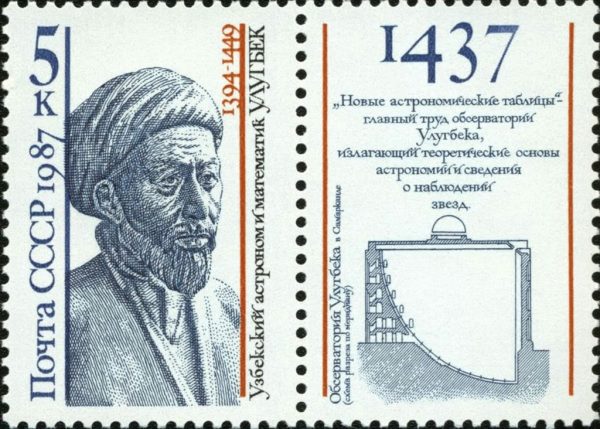
In 1447, Ulugh Beg succeeded his father as sultan of the Timurid Empire. However, he was beheaded in 1449 on the order of his son. Following his demise, the observatory was destroyed by religious fanatics and was only Re-discovered in 1908, by an Uzbek-Russian archaeologist from Samarkand named V. L. Vyatkin. He recovered the underground part of the Fakhrī sextant, consisting of two parallel walls faced with marble and the section of the scale between 80° and 57° of solar altitude. The Russians have a commemorative stamp to him. The 1987 USSR stamp translates from Russian “Uzbek astronomer and mathematician Ulugbek”
Eventually, his reputation was revived by his nephew, Abdallah Mirza (1450–1451), who placed Ulugh Beg’s remains in the mausoleum of Tamerlane in Samarkand, where in 1941, an expedition uncovered the tomb. Ulugh Beg lay fully clothed in a sarcophagus, which would indicate he was a man who died as a martyr who according to Islamic law had to be buried in his clothes. It seems he died a violent death for a man who came from an influential ruling family of the time and gave so much to his community in education, science, mathematics and astronomy. He also left a huge mark in Central Asia where he was a revered figure and in the history of astronomy; Ulugh Beg is ranked up there with Copernicus, Galileo and Ptolemy and yet how many of us have really heard much about this man? I certainly hadn’t until I researched this information and now I have added Samarkand to my ever-growing bucket list of places to visit!
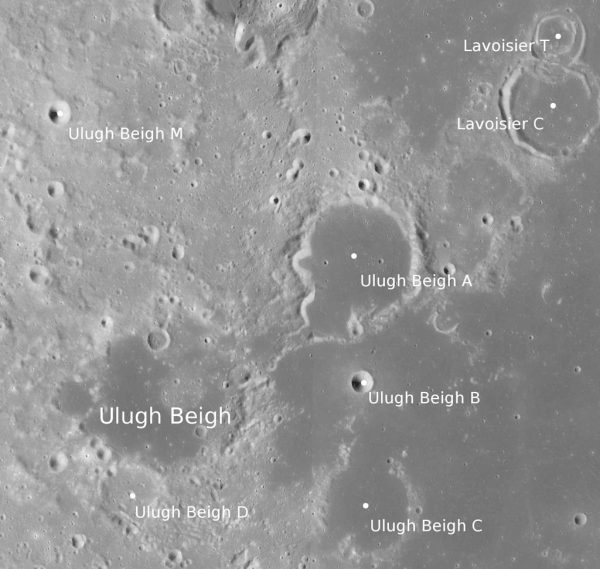
Today he is a national hero, one of the most revered historical figures in Uzbekistan, his statue erected in town squares across the nation. In the west he is unheard of, overlooked in favour of European scientists, the likes of Copernicus and Brahe. He has a crater on the moon named after him, who knew?
The Ulug Beg Observatory Museum was built in 1970 to commemorate Ulugh Beg. Ulugh Beg’s Star Charts, the Zij-i Sultani are kept in the museum although they are copies; the original drawings are in Oxford, England.
The global management of the observatory is organised as part of the general management plan of World Heritage Site no. 603. http://whc.unesco.org/en/list/603 The museum at the site presents information about astronomical instruments relating to the Timurid epoch.
The crater, Ulugh Beigh, on the Moon, was named after him by the German astronomer Johann Heinrich von Mädler on his 1830 map of the Moon. 2439 Ulugbek, a main-belt asteroid, discovered on 21 Aug. 1977 by N. Chernykh at Nauchnyj, was named after him.
